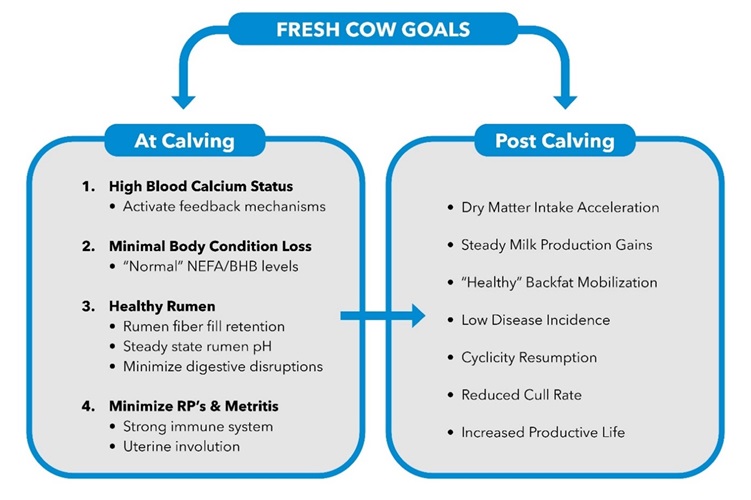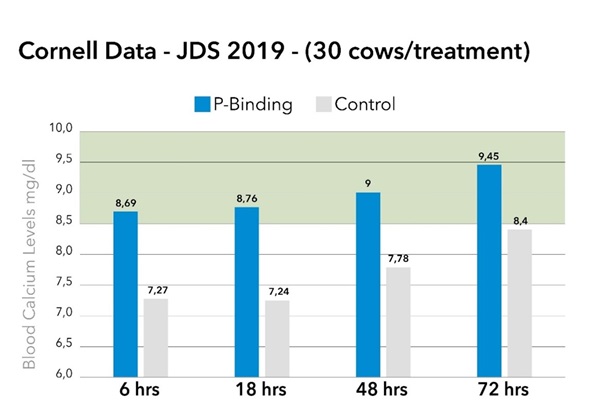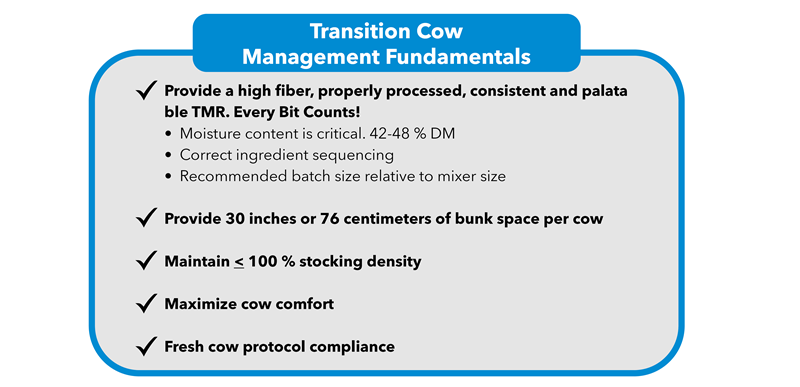Minimizing Hypocalcemia: A Novel Approach
The dry period and more importantly the 14/21-day pre-fresh period sets the stage for achieving the following transition goals assuming the essential environmental, management and nutritional boxes are checked.

University researchers have extensively studied various nutritional strategies to better understand and prevent hypocalcemia. Variations of these nutritional strategies have been implemented at the farm level, but results have been inconsistent in achieving higher blood calcium levels and lowering fresh challenges.
Today, a novel dietary binding approach is available to minimize fresh cow hypocalcemia. This strategy involves feeding a synthetic Zeolite A product (like X-Zelit) that effectively binds dietary phosphorus which triggers the release of bone calcium and phosphorus into the blood stream to maintain homeostasis. This feeding strategy is fed 14-21 days before projected calving. Research results and field experiences have been positive. During the 48 to 72-hour fresh cow window, consistently higher blood calcium levels are achieved. This is highlighted in a published research trial from Cornell University.
Positive impact of low dietary phosphorus pre-fresh on higher blood calcium levels post-fresh

This synthetic zeolite A feeding strategy with X-Zelit leads to higher fresh cow blood calcium levels and is mediated through lower blood phosphorus during the pre-fresh period. Consequently, lower blood phosphorus will be observed at calving, but quickly rebounds to normal levels by day 2 and 3 post-calving with no negative health outcomes observed.
As a backdrop, it is important to note there are multiple peer reviewed university research publications correlating lower dietary phosphorus pre-fresh to higher blood calcium levels post-fresh. Despite this, a lower dietary phosphorus recommendation is in contrast of what we may typically see at the farm level. With the producer’s concern for potential “low phosphorus” milk fevers and the common inclusion of higher phosphorus byproducts, nutrition consultants have historically formulated higher dietary phosphorus levels. Regardless of the type of pre-fresh strategy used, the research data and on-farm experiences strongly suggest that lower dietary phosphorus (<.35%) should be targeted.
Simplify the pre-fresh feeding program
Compared to alternative pre-fresh feeding programs, incorporating zeolite A (X-Zelit) into your prefresh program allows producers to grow and feed more home-grown forages in contrast to sourcing low potassium forages and routinely monitoring urine pH. In addition, higher blood calcium levels at calving should reduce the need for supplemental calcium boluses, minimizing fresh cow touches. Calcium boluses ought to be available for high-risk cows as part of a standard fresh cow health protocol. Overall, this feeding strategy may simplify the implementation and management of your pre-fresh feeding program.Transition success requires understanding of the on-farm management fundamentals that need to be in place. Consistently meeting these on-farm fundamentals 24/7 is not easy. But it is worth the effort since they play such a critical role in transition cow success and without them, increased fresh cow issues are more likely to occur regardless of the pre-fresh nutritional strategy implemented.

Achieving transition success can be challenging for both the cows and the producers. A seamless transition into lactation is essential to maintain health and achieve expected production and financial goals. Regardless of the nutritional strategy being considered, a farm-specific analysis is necessary to determine which approach is the best fit based on the unique challenges specific to that farm. Work closely with your nutritionist and veterinarian to check those boxes that will lower risk and increase your chances for transition cow success.

